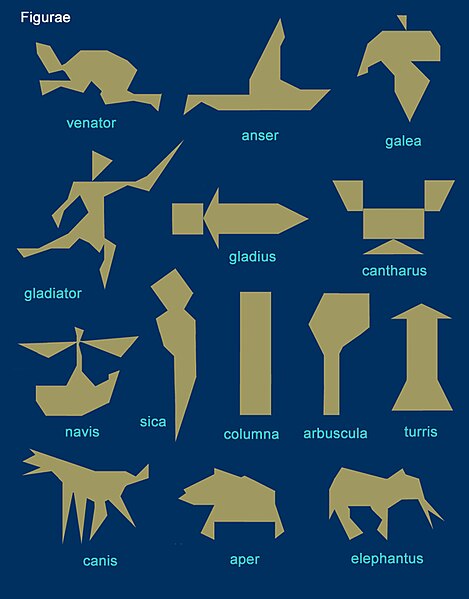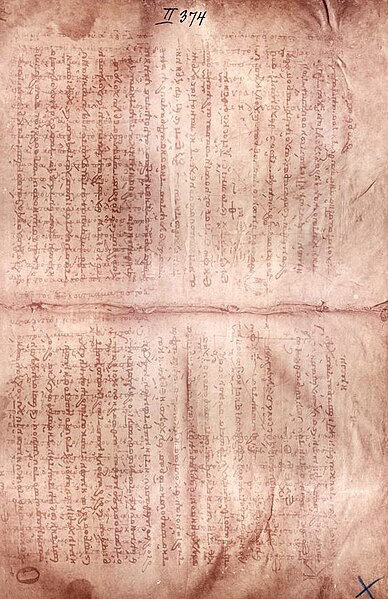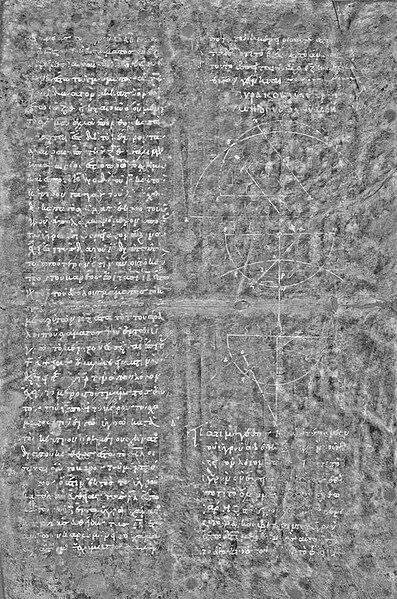In ancient Greek geometry, the Ostomachion, also known as loculus Archimedius or syntomachion, is a mathematical treatise attributed to Archimedes. This work has survived fragmentarily in an Arabic version and a copy, the Archimedes Palimpsest, of the original ancient Greek text made in Byzantine times.
Ostomachion (after Suter): square reformed with some pieces turned over
Ostomachion figures mentioned by Ausonius and others (Bibliotheca Augustana)
The Archimedes Palimpsest is a parchment codex palimpsest, originally a Byzantine Greek copy of a compilation of Archimedes and other authors. It contains two works of Archimedes that were thought to have been lost and the only surviving original Greek edition of his work On Floating Bodies. The first version of the compilation is believed to have been produced by Isidorus of Miletus, the architect of the geometrically complex Hagia Sophia cathedral in Constantinople, sometime around AD 530. The copy found in the palimpsest was created from this original, also in Constantinople, during the Macedonian Renaissance, a time when mathematics in the capital was being revived by the former Greek Orthodox bishop of Thessaloniki Leo the Geometer, a cousin of the Patriarch.
A typical page from the Archimedes Palimpsest. The text of the prayer book is seen from top to bottom, the original Archimedes manuscript is seen as fainter text below it running from left to right
Photo of the palimpsest
After imaging a page from the palimpsest, the original Archimedes text is now seen clearly
Ostomachion is a dissection puzzle in the Archimedes Palimpsest (shown after Suter from a different source; this version must be stretched to twice the width to conform to the Palimpsest)





